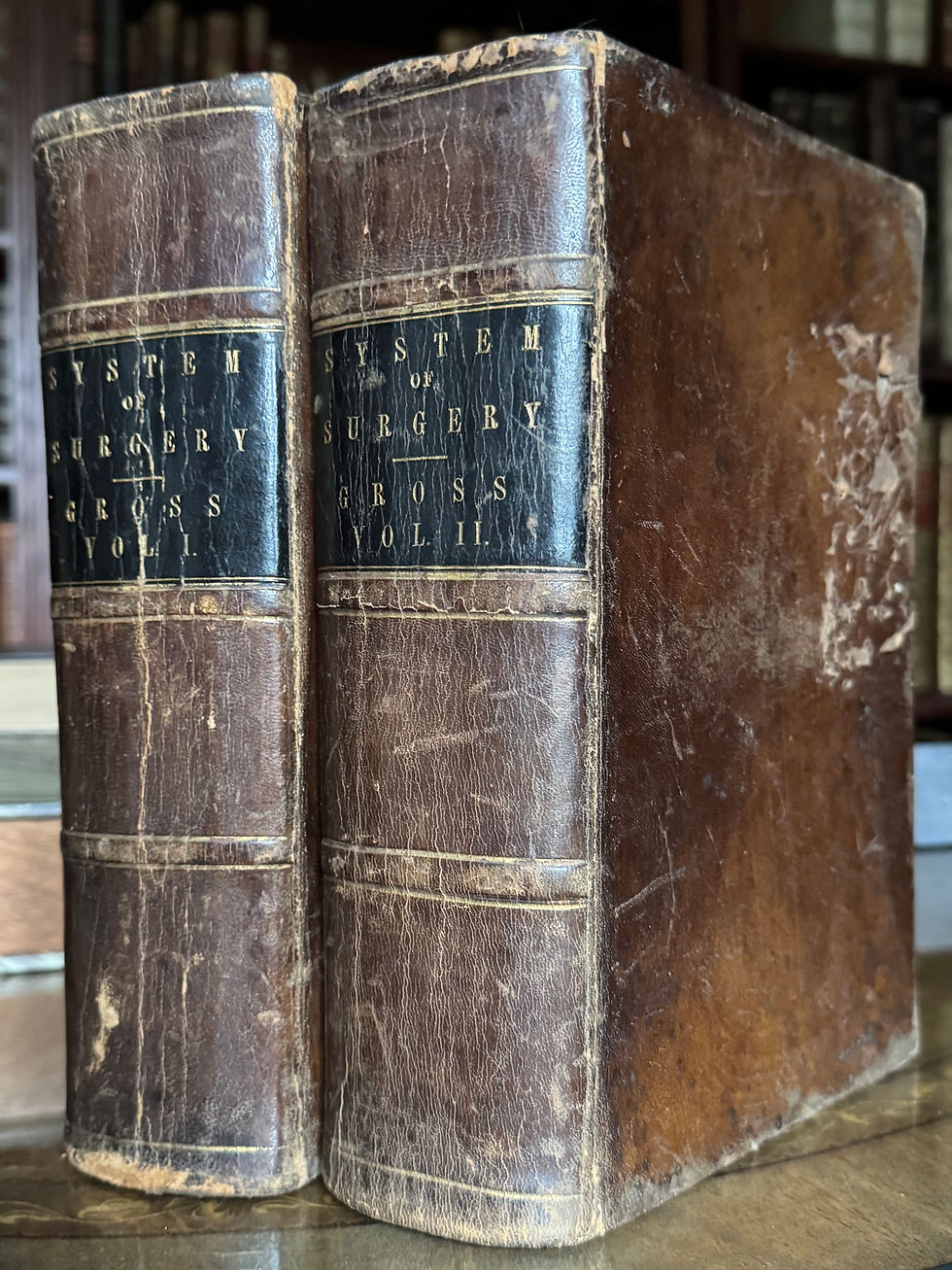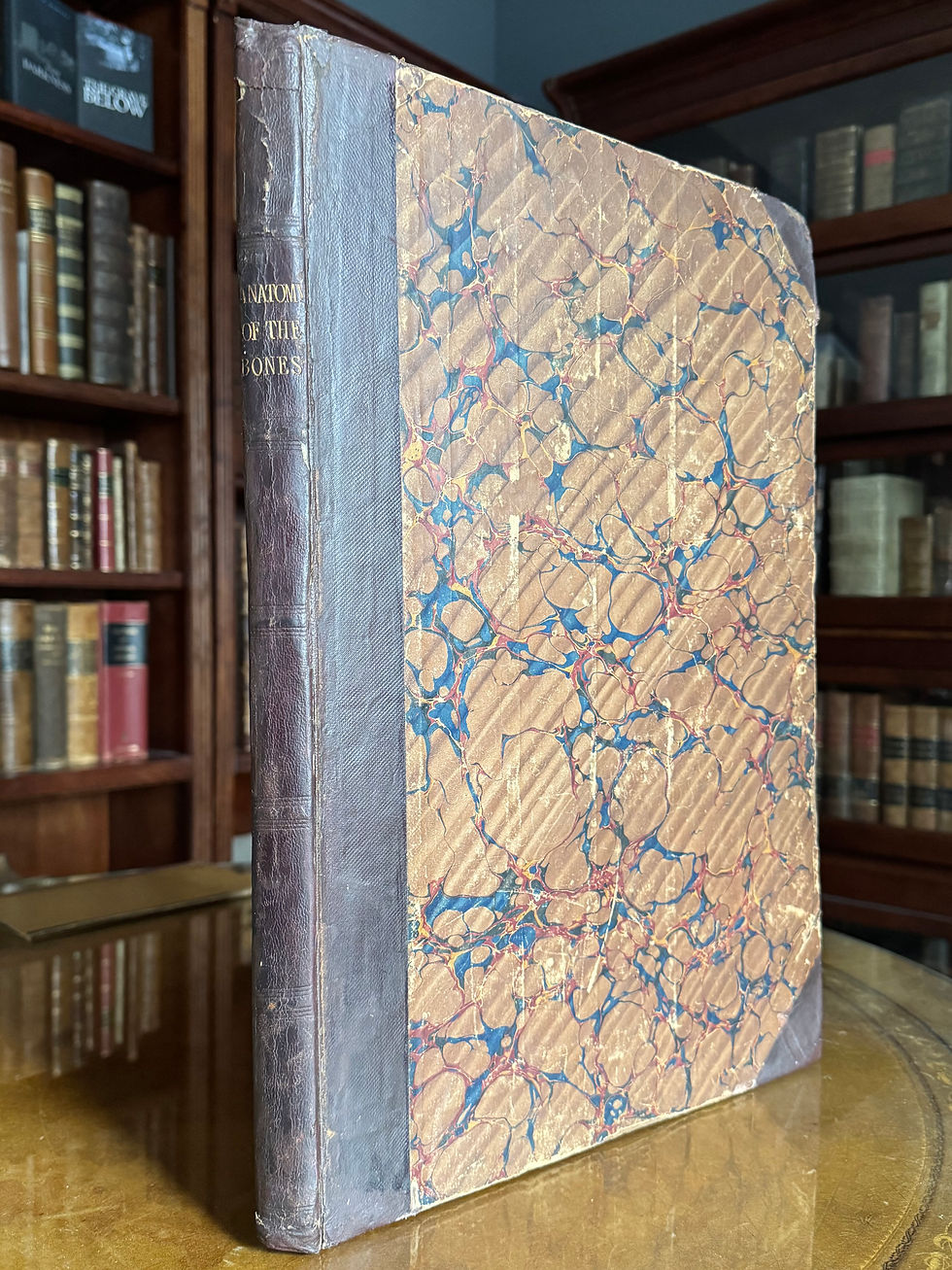Bartholin, Anatome Ex omnium Veterum, 1686
Thomae Bartholini Anatome Ex omnium Veterum Recentiorumque Observationibus Inprimis Institutionibus b. M. Parentis Caspari Bartholini, Ad Circulationem Harbejanam, Et Vasa Lymphatica Quintum Renovata. Cum Iconibus novis, & Indicibus. Lugduni Batavorum, Apud Jacobum Hackium. 1686.
Octavo in contemporary vellum over boards with manuscript title on spine. Scattered small stains on vellum. Corners slightly bumped. Tiny tear tail of rear hinge near lowest thong. Hinges otherwise intact and strong. Red speckled page edges. Engraved title and title trimmed. Frontis is on verso of **8. 18th century owner’s name (“Stephani Wali 1756”) on rear pastedown. Folding plates following pages 206 and 570 with repairs (and some loss of the latter). Clean, bright, and tight throughout with well-retained margins.
Our copy is more copiously illustrated an any other we have encountered, with 123 illustrations: engraved title, frontis, 96 plates, 12 folding plates, 13 figures. The frontis shows a dissection in its initial stages (abdomen), well-attended, with surgical instruments and a skeleton (as well as its shadow) above and behind the crowd. The numerous plates and figures demonstrate various dissections, viscera, and other anatomical structures. Tabula 1 on pg 771 illustrates blood flow during vivisection of a dog.
Engraved title, title, *-**^8, A-Eee^8, Ff^6
i-xvi, 1-809, 16 index, 2 blanks
(Contrast with Waller 713, which gives (28), 806, (16), ill. 14 plates, 1 portrait, 1 frontis.)
“Thomas Bartholinus, the son of the Danish anatomist Caspar Bartholinus senior, born at Copenhagen, October 20, 1616. He traveled extensively in Europe, and received his doctor’s degree at Basil. He held the position of professor of anatomy at Copenhagen until he retired in 1661. His library and manuscripts were destroyed by a fire in 1670. He died on December 4, 1680. He was actively involved in research in anatomy, physiology, and pathological anatomy, “particularly in the discovery of the lymphatics,” and was an “extraordinarily productive” author. His popular textbook was actually a revision of his father’s book Institutiones anatomicae. Most of Bartholin’s illustrations are after Vesalius, Casserius, Vesling, Ruysch, Stensen, de Graaf, Sylvius, and Folius. (Choulant 245-247). Singer (pg 167) gives Bartholin as one (of two) of the most widely read anatomists of the 17th century.
















